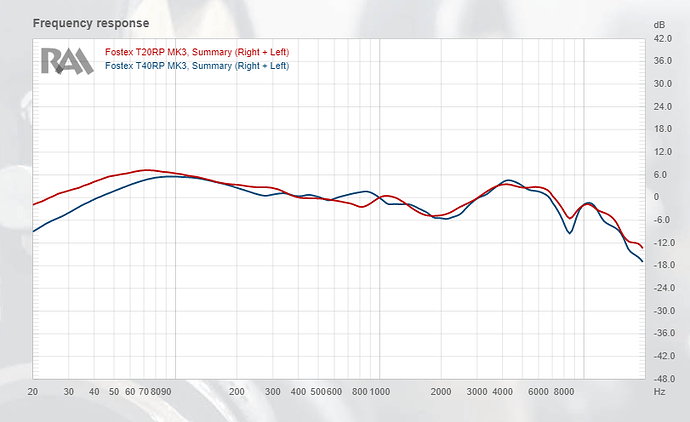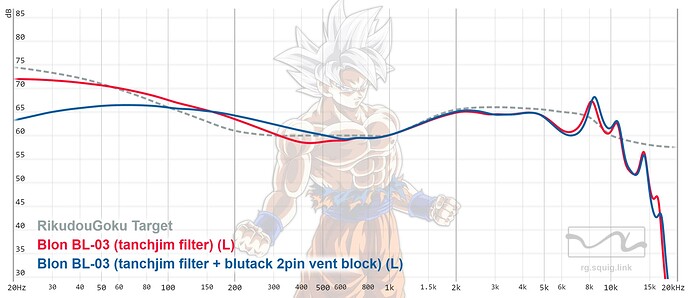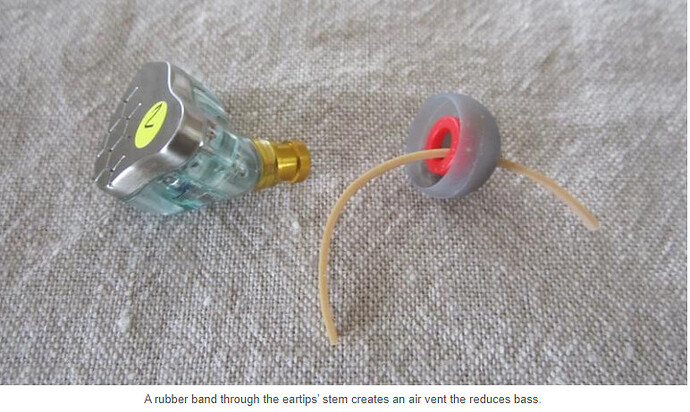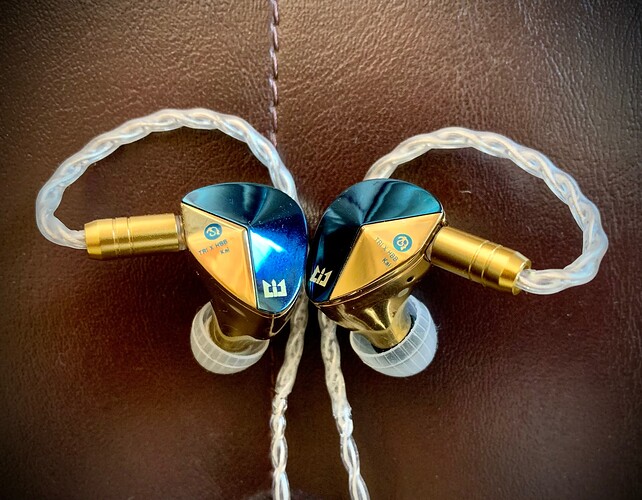Is there a cheaper alternative to 64 Audio Tia Trio? Or will a 1+ years old used unit last long enough? I really like the sound but paying 1800USD for it is tough to swallow.
I tried the “spicy gold” nozzle/filters on the D13, and I think the extra mids help offset the warmth a bit. It still keeps the same character, but with a little more perceived detail and clarity. These are probably staying on long term.
@Rikudou_Goku you may appreciate this. I was doing some tip rolling on my Vortex today trying to bring more sub bass out and I had an idea to mess with the rear vent instead. I noticed that if I covered the rear vent bass went way down so i decided to take off the filter that definitely brought the bass in your face! Its by no means basshead levels but its way more present than before now!
I still need to get a rig to measure these changes but I see how one can get lost in modding
oh, that aint new info. More seal at the back vent will result in less bass and less seal will be more bass. Its the opposite of the inner/front vent basically. Its a common way of tuning, especially for headphones and earbuds.
Here are some examples.
The back vent serves as a bass port/vent basically. (like in subwoofers, they usually have a vent at the back for this exact purpose (or a bass radiator if they are very small and dont have a port))
Apologies if my post came across as me discovering something new! I thought to try it because you shared the above info when I was trying to squeeze more bass out of the Olina too so thank you!
The vortex only has one vent so I wasn’t sure which way it would go by removing the filter but now I know!
haha, dont worry.
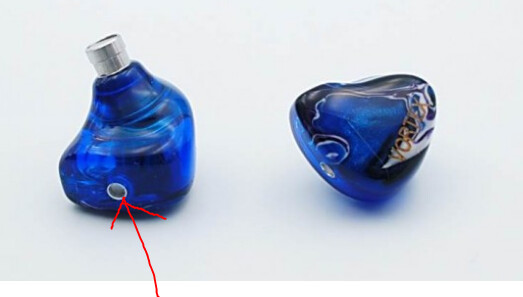
That does look like it would act like a back vent. There could be one built into the 2pin connector as well, like on the GS Audio iems. While im guessing that the nozzle is acting like the front vent.
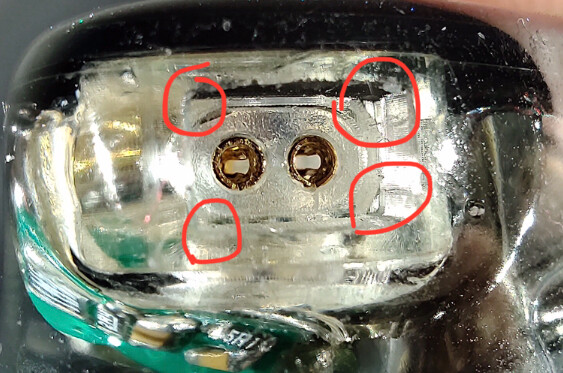

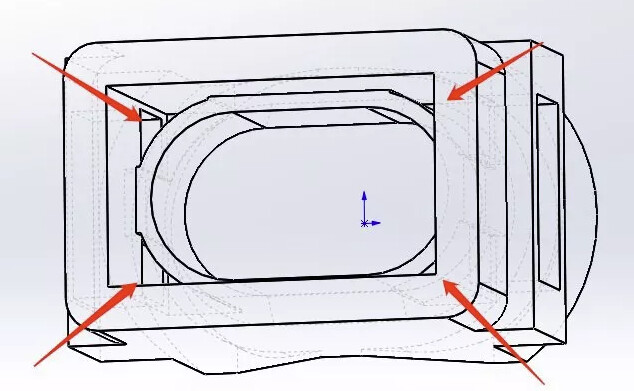
If you want to reduce the bass, another way would be to put something in between the nozzle and the tip stem, so you make a gap in it.
Or, to make a hole in the tip stem.
Well that’s an interesting trick with the tip stem. I never would have guessed some IEMs have vents in the 2 pin.
I also put a tanchjim filter on the nozzle to further boost bass but I didn’t like how it affected the upper frequencies
Yeah, if you mess with the nozzle, its primarily going to affect the 2-5k area. Bass boosting is usually done by blocking the inner vent and/or lowering the seal on the outer vent. The downside with blocking the vents however, is that pressure build up can appear, if it does you can lessen it with micropore tape instead of a full seal.
How does the Yanyin Moonlight compare to the Mangird Tea 2? I came across a post that very highly praised the Moonlight, and I’m quite curious.
The graphs seem similar, but as I’m new to the hobby, I have no idea how to interpret the differences, nor do I know what adding 2est for a tribrid does. The only issue I have with the Tea 2 is the fit (gets uncomfortable after a while because of its size) and some songs come off as a bit dull & boring. I’m not sure if I want to throw in $300 just for some minor change I can barely hear though.
Those types of tunings beg for volume to be raised. I’m more into slightly U shape tunings ![]()
I was noticing how similar they were just yesterday - EST usually means you hear more treble than is graphed, but these do both look “inoffensive and perhaps not punchy enough”. I’ll have to hear the Moonlight for myself soon, never heard Tea 2. Just riding off graphs.
Ah I see, well I don’t particularly like more treble so I think I’m good hahah. I wish there were more variety in the $300 range of IEMs. Blessing Dusk 2 were too bright for me, and while I do like the Mangird Tea 2, they really are a slight bit too safe and inoffensive. It’s good if I tune out everything and focus on the details, but a bit more bass and brightness would be nice hahah
Definitely seems to be the case hahah. Slightly more U-shaped would be nice for some fun
Just a reminder that for iems that you find being too bright, you can fix it by applying a damping filter on the nozzle. Might save you a lot of money that way.
TRI X HBB KAI Review/Comparison: Deep Waters
Hi guys, I want to start this review by emphasizing that one of my favorite IEMs is the Mangird Tea, meaning, I LOVE a darker tuning since it allows for more scaling and thus immersion… however, in order for the sound to not feel cramped and lacking detail, good imaging, separation, and dynamics are needed. This is where the KAI falls short in with its higher frequency dip and lack of drivers. Don’t get me wrong by itself it’s still a good IEM, but the problem is that there are too many other competitors around its sub $100 price bracket. But before we get into comparisons let’s talk about the pros and cons of the KAI.
PROS:
It’s $70. If you want a meaty, warm, and bassy IEM then the KAI is for you. Note-weight is heavy and authoritative, and the bass is boomy and hits you right in the face. It’s great for older hip-hop, and pop/EDM. I wouldn’t say its basshead level but its close. And due to its lack of treble extension I can crank this bad boy up without any fatigue. It’s great for loud volume listening as well as all-day sessions, and if you just want something to rock your head to and not care much about technicalities then this is the set for you. Plus, it looks stellar.
CONS:
As for the areas of improvement, they have little to do with the actual tuning, but rather the lack of drivers to reach KAI’s full potential. To better understand this I’ll briefly explain how resolution is determined; there are 3 main aspects to it: Dynamic Extension, Separation, and imaging. Dynamics refers partially to tuning, BUT MAINLY how much of the frequency range (20hz to 20Khz) the IEM can cover and how well/smooth it covers it (so no sudden dips and jumps or little jitters). If an IEM is missing a certain part of the musical frequency then naturally it’s also missing all the information in that area. BUT, this doesn’t mean you need the entire frequency since many areas are better off dipped too avoid sibilance (and some regions we can’t even clearly hear), but rather, it’s where the dips occur and how well an IEM transitions from those said dips.
EDIT: To clarify, when I say sudden dips in frequencies I’m referring to sudden changes in volume from a louder frequency area to a quieter one, so difference in loudness and quietness. Dynamics is the change/difference in volume from the loudness parts to the quietest parts which is affected by the recording–> which the sound can then be affected by the tuning of the IEM through taking away or adding certain parts of the frequency which alters the pre-existing loudest and quietest levels of the track when it finally arrives to your ears.
So, you need enough extension for resolution (the TEA for example), but most importantly a balance to both the low-end, mid, and higher frequencies is needed. This is because if you have too much bass WITHOUT ENOUGH DRIVERS you’ll run into the problem that the KAI faces, muddying details in the mids. And if you don’t have enough treble extension or air, then you’ll also face the issue of having the sense of congestion and a sense of smaller soundstage. Here, the KAI runs into both issues: due to the smaller/reduced stage size from the dark treble, the bass is automatically pushed forward in nature as well as other instruments, resulting in a lack of depth when it comes to soundstage where everything is placed right up to your face, and instruments and vocals have a much smaller area to play around in, which again, would be fine if an IEM has amazing separation and imaging that allows precise attack and fast decay that allows the music to flow freely without anything getting in the way, but if an IEM doesn’t have the hardware to do so then it simply results in a muddying and blending of sound blasting in front of your face. This is why cheaper IEMs tend to go with a treble-favored tuning since it allows for more air and space for everything to transverse in due to the lack of hardware at their lower price point.
The Mangird Tea by-passes its issue of darker treble and less air with its more balanced tuning (much less bass takes less room/attention from other instruments and more treble extension) and 6 additional drivers, resulting in great separation and precise imaging, and allowing for an “around your head” staging experience that I think the KAI is trying to reproduce but fails so mainly due to its lack of hardware and the rest to its tuning. As the result, timbre is off as things are boxed in due to the smaller staging, and vocals, although forward and non-fatiguing, lacks detail and sounds muffled. Voices are loud but unclear, if that makes sense. Soundstage wise instruments/vocals are not well-separated for imaging to be precise enough to have an around your head experience like the TEA; this results in a wall of sound right up to your face without much depth and 3D.
As a metaphor, think of resolution as rocks in a river, or the sea in KAI’s case. The better separation an IEM has, or in other words the more separated the rocks are from each other, the easier to see those rocks and pick out the details/texture on each of them with different rocks being different instruments/vocals. Too much bass and not enough treble extension will muddy the waters, making the rocks harder to see, and a combination of muddy waters and unseparated rocks is where the KAI currently stands: hard to see, in deep waters.
COMPARISONS:
Now, how does it stack up to other IEMs around its price? Well, for the past week I have been A/Bing the KAI with the Airship, Olina, Starfields/Aria, and Chu and here’s what I found:
BASS:
- KAI/Airship/Modded Olina
- Olina
- Starfields/Aria
- Modded Chu
- Chu
MIDS:
- Airship/Modded Olina/Olina
- Starfields/Chu/Modded Chu
- KAI/Aria
TREBLE:
- Olina (mid volume)
- Airship/Modded Olina
- Modded Chu
- Starfields/Aria/Chu
- Olina (High volume)
- KAI
VOCALS:
- Airship/Modded Olina
- Olina (mid volume)
- Modded Chu
- Starfields/Aria/Chu
- KAI/Olina (high volume)
SOUNDSTAGE:
- Olina
- Airship/Modded Olina
- Starfields/Aria/Chu/Modded Chu
- KAI
IMAGING:
- Airship/Modded Olina/Olina
- Starfields/Aria
- KAI/Chu/Modded Chu
SEPARATION:
- Olina (barely better than #2)
- Airship/Modded Olina
- Starfields/Aria
- Chu/Modded Chu
- KAI
TIMBRE:
- Airship
- Modded Olina
- Olina
- Starfields/Aria
- Chu/Modded Chu
- KAI–> Due to cramped staging from dark treble KAI sounds boxy and unnatural
CONCLUSION:
So where does the KAI stand? Well, in my opinion there are really 3 options: 1. If you like bass it would be better to grab the Olina and do the double filter mod (which is audibly pretty much the same as the Airship) or the Airship if you don’t want to mod. These 2 sets are a few steps ahead of the KAI when it comes resolution, staging, as well as dynamic extension. It won’t hit as hard as the KAI (note-weight is lighter and less warm) but is overall the much better IEM especially the Olina at $100 which is well-worth the extra $30 from the KAI.
-
If you don’t like warmness and that much bass then I would grab the Chu at more than half the price of the KAI but with better resolution and more natural vocals. You can also mod the Chu (add 2 Olina filters or similar) and get more bass and smoother high-mids/treble with less muddiness than the KAI, although at the cost of less scaling, note-weight, and bass.
-
And finally, grab the KAI if you just want something to rock to at high volumes. It has the best note-weight and volume scaling out of all of them, but of course at the cost of resolution and technicalities.
If you have the Melee already I wouldn’t recommend upgrading since they are very similar which is I didn’t bother putting it on the list… Unless you want the bling ![]() -And there’s no point in getting the Starfields/Aria since the Chu (especially modded) is the better tuned version of them at $20, and Olina is the upgrade to both at $100… I’m not an Olina shill I swear they’re just that good guys
-And there’s no point in getting the Starfields/Aria since the Chu (especially modded) is the better tuned version of them at $20, and Olina is the upgrade to both at $100… I’m not an Olina shill I swear they’re just that good guys ![]()
Overall still a nice set. Curious to see how it sounds with more drivers, and air ![]()
Ranking: B-
I think you would enjoy the Canon then
my KAI has been in my city for 3 days and still not out for delivery… maybe next week lol
Interesting approach by a reviewer to keep up with the rapid launch schedule of IEMs. Not sure I dig the reviews style - is he so experienced that he can spend 1 song and give a rating? ![]() I love how his preference is Aladdin > Moonlight > Canon
I love how his preference is Aladdin > Moonlight > Canon ![]() won’t be chasing him with a pitchfork though - just YMMV and it’s a hobby!
won’t be chasing him with a pitchfork though - just YMMV and it’s a hobby!
Came here to post that as well. Yeah, experience gives you that. I usually get my first impressions of 1 or 2 songs, I just keep doing more for the shake of assurance. With his backlog, I’d 100% do the same.
I like the honesty and price checking, as it always puts things into perspective.
I tend to do it (one-song testing) when I tip roll. And I can tell you it can’t tell you the whole story: I was surprised when I tested some other tracks, as they hit some frequencies the 1st song didn’t hit. But it gives an approximate, a first glance of what the differences will be.
Is the approximate enough is an question each one has to answer for himself.
